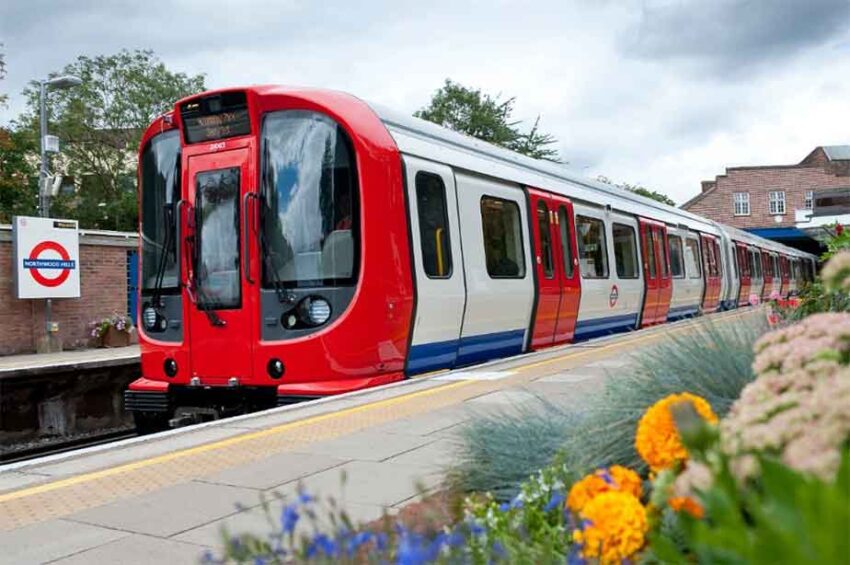Thursday, August 22, 2024 London’s bustling transport network has been significantly impacted by severe delays on both the Bakerloo line and the Docklands Light Railway (DLR). These disruptions, caused by signaling failures, are affecting thousands of commuters and travelers, highlighting the critical role of reliable public transport in the daily lives of Londoners and visitors alike. The signaling failure at Piccadilly Circus has paralyzed the Bakerloo line, causing delays along the entire route.
This situation is particularly problematic as the Bakerloo line is a vital artery connecting key areas of central and northwest London. Commuters relying on this line are experiencing significant delays, with many having to seek alternative routes to reach their destinations. Simultaneously, the DLR is also facing severe delays, particularly between Canning Town and Woolwich Arsenal, due to a signaling failure at Pontoon Dock.

The DLR, a critical link for the Canary Wharf business district and southeastern parts of London, is already operating on a reduced service schedule as part of its ongoing depot expansion to accommodate new trains. This additional setback is compounding the inconvenience for passengers who are being advised to use their valid tickets on other rail services, Tube lines, and London buses instead. These delays are not just a frustration for daily commuters; they also have significant implications for the tourism sector in London.
As one of the world’s most visited cities, London’s public transport system is a lifeline for millions of tourists who rely on it to explore the city’s attractions. The Bakerloo line, for instance, connects major tourist sites such as Madame Tussauds, the Sherlock Holmes Museum, and the historic district of Westminster. Disruptions on this line can lead to a cascade of delays for tourists trying to navigate the city, potentially causing them to miss planned visits or reservations.
The DLR is equally important for tourists, especially those looking to explore the rapidly developing areas around Canary Wharf or visit the historic Greenwich district, home to the Prime Meridian and the National Maritime Museum. With the DLR delays, tourists may face longer travel times or be forced to alter their itineraries, which can affect their overall experience of London. The ongoing disruptions on London’s transport network could have wider implications for global travelers.
London, a major international hub, often serves as a gateway for tourists visiting the UK and Europe. Reliable public transport is crucial for maintaining the city’s reputation as a tourist-friendly destination. Persistent delays and service disruptions could deter future travelers, who may seek alternative cities or avoid certain times of the year when such issues are more likely to occur.
Moreover, these disruptions highlight the importance of maintaining and upgrading transport infrastructure in major global cities. As urban areas grow and attract more visitors, the demand on public transport systems increases, necessitating continuous improvements and investments in technology to prevent failures like the current one affecting London. The current disruptions underscore the challenges facing London’s aging transport infrastructure.
Signaling failures, like the ones causing the delays on the Bakerloo line and DLR, are often a symptom of outdated systems that struggle to cope with the demands of modern urban transportation. The ongoing engineering works on the Piccadilly line, with closures extending until September 1, are part of broader efforts to modernize the network, but they also illustrate the disruptions that such essential upgrades can cause. Moving forward, Transport for London (TfL) will need to continue balancing the immediate needs of daily commuters and tourists with the long-term necessity of infrastructure improvements.
This includes investing in new technologies, expanding capacity, and minimizing service interruptions during upgrades. Additionally, better communication with passengers during such disruptions is crucial to managing expectations and providing alternative solutions. The severe delays currently affecting the Bakerloo line and DLR serve as a reminder of the critical role that reliable public transport plays in the daily lives of both residents and visitors in London.
While the city continues to attract millions of tourists each year, maintaining and upgrading its transport infrastructure is essential to ensuring that it remains a top destination. As TfL works to resolve these issues and prevent future disruptions, the experiences of today’s travelers will shape the future of London’s tourism industry..



















